Saludos a mis amigos adictos a las ciencias! estamos en pleno invierno y me dio curiosidad en analisar una muestra de agua estancada para ver que animales o algas nos conseguimos en cuerpos de agua con temperaturas muy bajas, esta es mi primera experiencia realizando identificacion de microorganismos en invierno y no tenia grandes espectativas pero todo cambio en el momento que consegui identificar algunos animales que nunca antes los habia visto! que te parece si me acompañas en esta pequeña experiencia!🧠📚🧫
Hello my science addicted friends! We are in the middle of winter and I was curious to analyze a sample of stagnant water to see what animals or algae we found in bodies of water with very low temperatures. This is my first experience identifying microorganisms in winter and I did not have great expectations, but everything I changed when I managed to identify some animals that I had never seen before! What do you think if you join me in this little experience!🌍🦟💧🕵️♂️

Mi primera captura🕵️♂️🔬/My first catch🙇♂️🧫

Nunca habia visto bajo el micriscopio una larva de una hymenoptera, para entender mejor de que se tratan estos animales debemos tener en cuenta que las hymenoptera son el orden mas extenso de los insectos, hasta la fecha se han registrado mas de "150mil especies" y se estima que hay muchas mas por descubrir, su principal caracteristica es que tienen "alas membranosas" como las abejas, avispas, no todos los hymenoptera depositan sus huevos en el agua asi que en este caso esta larva originaria el adulto de algun Corixidae🕵️♂️🧫🦟
I had never seen a larva of a hymenoptera under the microscope, to better understand what these animals are about we must take into account that the hymenoptera are the largest order of insects, to date more than "150 thousand species" have been recorded and It is estimated that there are many more to be discovered, their main characteristic is that they have "membranous wings" like bees, wasps, not all hymenoptera deposit their eggs in the water, so in this case this original larva is the adult of some Corixidae.🤯🦗🐜🐝

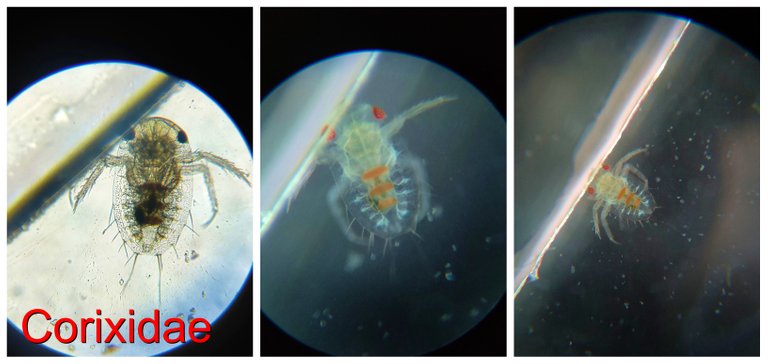
El siguiente paso una vez identificado que este insecto se agrupa en los hemiptera he podido identificar que se trata de una larva de "Corixidae", estos insectos son exclusivos de cuerpos de aguas conviertiendolos en animales acuaticos que prefieren las aguas estancadas o lagunas ya que prefieren nadar hacia el fondo para esconderse o en busca de alimento! se han descubierto un total de "500 especies" y puede decirse que son cosmopolitas podemos verlas en "casi" todo el mundo! no son depredadores por el contrario se alimentan "de algas".📚🦟💧
The next step once identified that this insect is grouped in the hemiptera, I have been able to identify that it is a larva of "Corixidae", these insects are exclusive to bodies of water, turning them into aquatic animals that prefer stagnant waters or lagoons since they prefer swim to the bottom to hide or in search of food! A total of "500 species" have been discovered and it can be said that they are cosmopolitan, we can see them in "almost" the whole world! They are not predators, on the contrary, they feed on "algae".🧫🔬
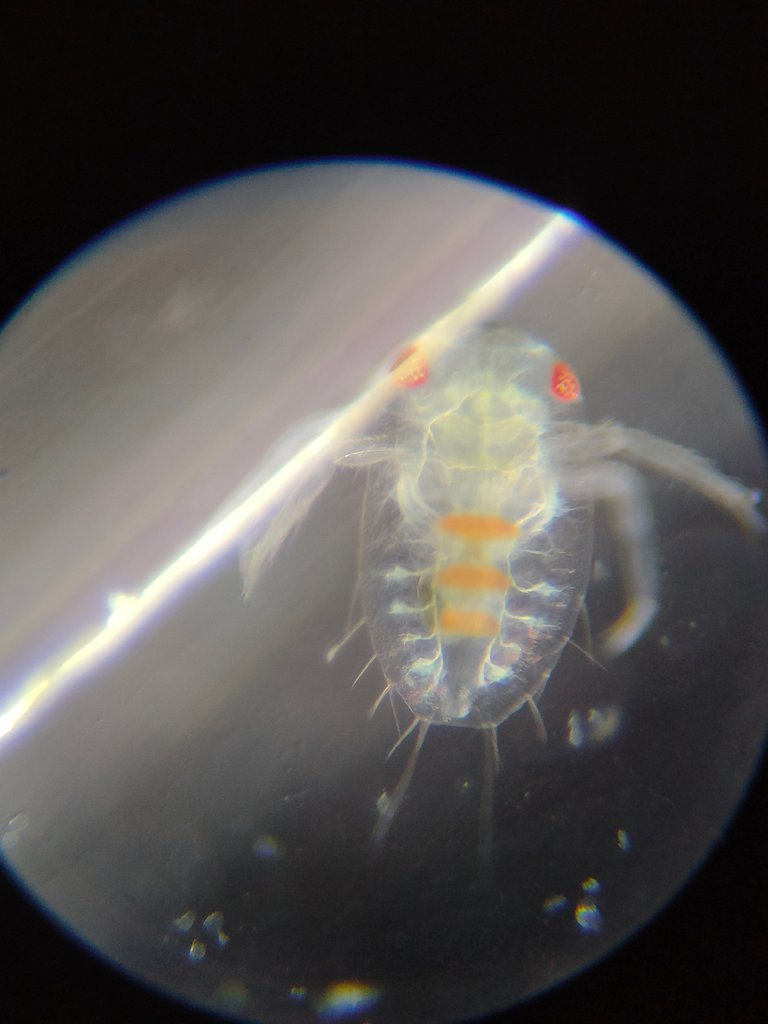
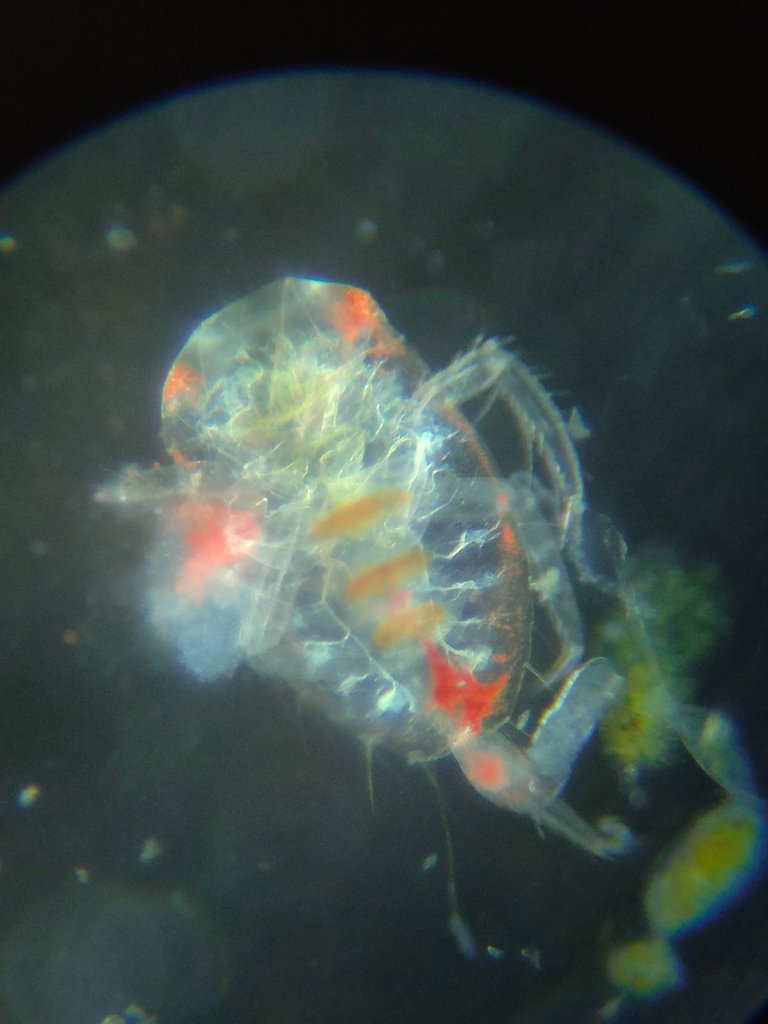

Algunas algas y diatomeas🕵️♂️🔬/Some algae and diatoms🙇♂️🧫

Normalmente cuando vemos algun microorganismo con una coloracion verdosa estamos en precensia de una alga, y puedo decir eso por causa de la clorofila, como puedes ver en estas fotografias hay dos especies de euglenofitos estas especies son las protistas "mas abundante del planeta" y normalmente aparecen en cuerpos de aguas que son ricos en materia organica, cuando estamos en presencia de millones de euglenofitas el color del agua normalmente es verde! si observas bien en ambas especies hay una mancha roja, esta estructura se llama: "estigma".🤯💥💥🧫
Normally when we see some microorganism with a greenish coloration we are in the presence of an algae, and I can say that because of the chlorophyll, as you can see in these photographs there are two species of euglenophytes, these species are the "most abundant protists on the planet" and normally They appear in bodies of water that are rich in organic matter. When we are in the presence of millions of euglenophytes, the color of the water is normally green! if you look closely in both species there is a red spot, this structure is called: "stigma".🔬🧠🕵️♂️
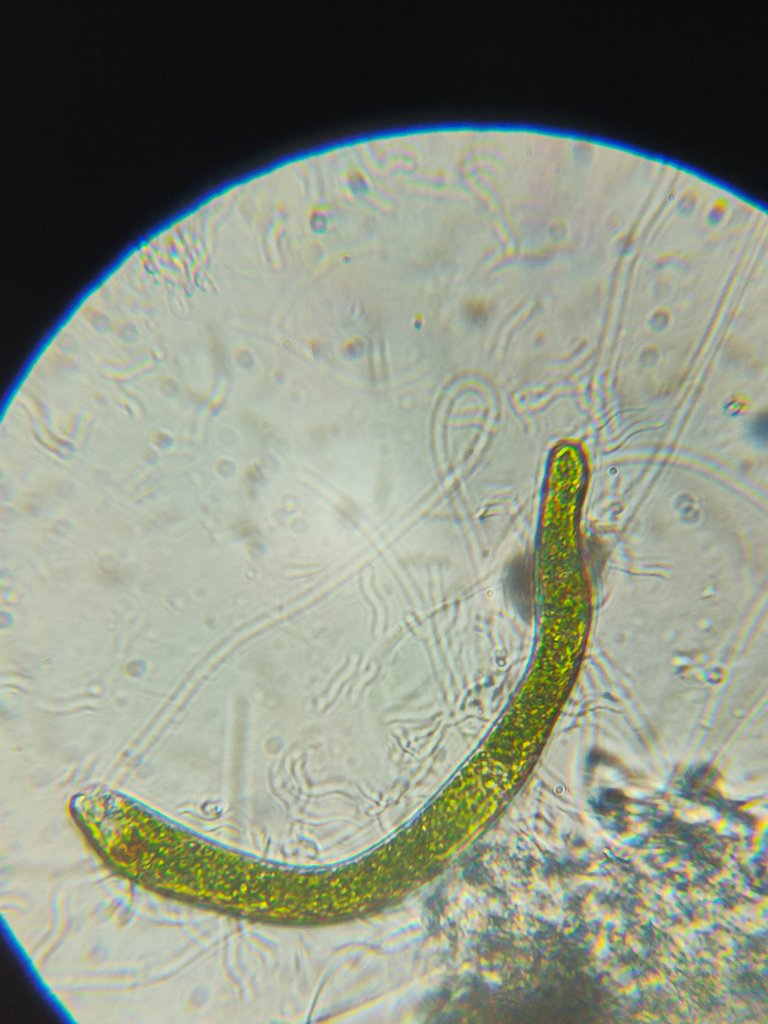

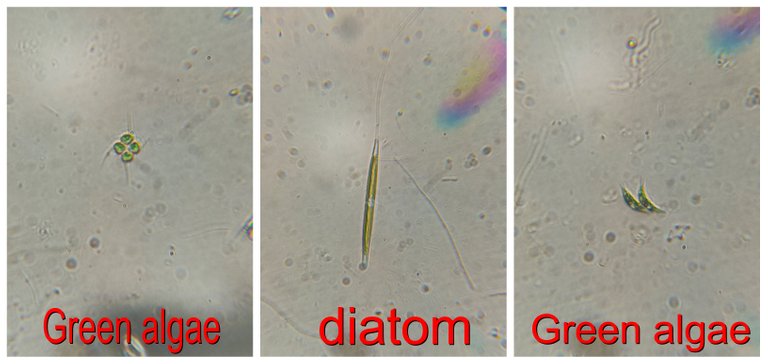
Aqui podemos ver la variedade morfologica de las algas, muchas tienen diseños y movimientos diferentes! hay algas verdes que no tienen estructuras para realizan un movimiento voluntario y dependen del movimiento del agua! en el medio puedes ver una diatomea que son algas unicelulares que abundan en el fitoplacton hasta ahora se han descrito unas 20mil especies y dentro de la ecologia del agua son organismos productores!💚💥
Here we can see the morphological variety of the algae, many have different designs and movements! there are green algae that do not have structures to perform voluntary movement and depend on the movement of water! In the middle you can see a diatom, which is a unicellular algae that abounds in phytoplankton. Up to now, some 20,000 species have been described and within the ecology of the water they are producer organisms!🍃🌞

Turbelarios🕵️♂️🔬/Turbellarians🙇♂️🧫
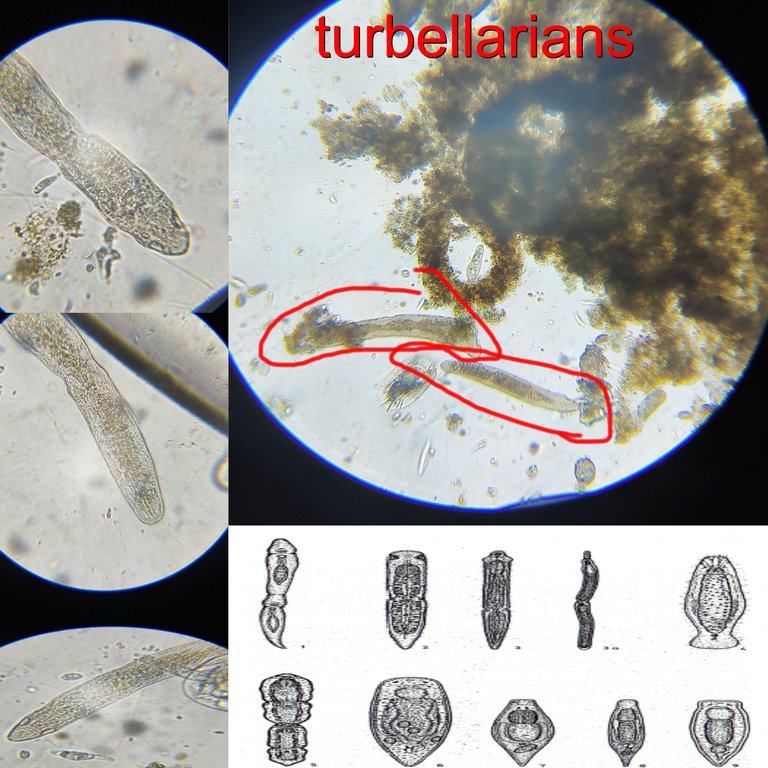
These are also very strange animals that look like a snake, they are known as: "planarias" they belong to the "Platyhelminthes", they are free-living animals that are found in various types of bodies of water, fresh water being common. , they tend to live in muddy waters, some saltwater Turbellaria are poisonous and have bright colors.🤯🕵️♂️🧠
Estos tambien son animales muy extraños y que tienen un aspecto a una serpiente, se les conoce como: "planarias" pertenecen a los "Platyhelminthes", son animales de vida libre que se encuentran en varios tipos de cuerpos de agua siendo comun el agua dulce, acostumbran a convivir en aguas lodosas, algunos Turbellaria de agua salada son venenosos y tienen colores llamativos.📚🔬

Rotiferos🕵️♂️🔬/Rotifers🙇♂️🧫
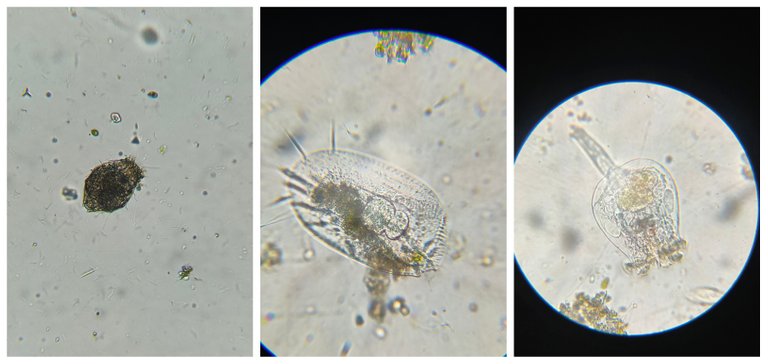
These are also cosmopolitan and common in stagnant freshwater, here we see three varieties of species with different bodies, the middle species is a ciliate, actually all these species have external structures that are formed from the coelom to allow the animal to move, in the rotifers we can see a "foot" in the case of the third animal, in the other two we see some "threads" these structures are the cilia.📚🔬
Estos tambien son cosmopolitas y comunes en agua dulce estancada, aqui vemos tres variedades de especies con cuerpos diferentes, la especie del medio es un ciliado, en realidad todas estas especies tienen estructuras externas que se forman del celoma para permitir dar movimiento al animal, en los rotiferos podemos ver un "pie" en el caso del tercer animal, en los otros dos vemos unos "hilos" estas estructuras son los cilios.🤯🕵️♂️🧫


Aqui vemos otros microorganismos que me consegui mientras analizaba esta muestra de agua, comenzando por las pulgas de agua que son bastante resistentes y en esta altura del año tienen un metabolismo mas parado, luego los crustaceos diminutos que serian los ostracodos tambien comun en aguas estancadas estos de aqui alcanzan grandes tamaño y algunos llegan a un centimetro o mas! por ultimo los acaros de agua dulce que tambien son pequeños esta especie es microscopica. Por lo que observo en invierno es comun conseguirme con especies comunes de verano pero a diferencia es que en menos cantidad! porque el agua se repone constantemente por la lluvia y hay menos materia organica disuelta.🔬📚🔬
Here we see other microorganisms that I got while analyzing this water sample, starting with the water fleas that are quite resistant and at this time of the year have a slower metabolism, then the tiny crustaceans that would be the ostracods, also common in these stagnant waters. from here they reach large sizes and some reach a centimeter or more! Finally, the freshwater mites that are also small, this species is microscopic. From what I observe in winter it is common to get common species of summer but the difference is that in less quantity! because the water is constantly replenished by rain and there is less dissolved organic matter.📚🕵️♂️🧠



DNA is an organization to foster and DENSIFY NATURE-APPRECIATION which aims to establish REPORTS OF BIODIVERSITY DATA that is contributed by all of us Hiveans and subsequently cataloged.
Therefore DNA searches for HIGH-QUALITY posts that aim to DESCRIBE and determine the BIODIVERSITY AROUND YOU with added EXPLANATIONS and INFORMATION. For these informative posts they offer a CURATION SERVICE using the @dna.org account. It is also a CURATION TRAIL. Just add the #dna TAG if you think that any of your posts is what they are looking for.
GRACIAS POR LEERME / THANKS FOR READING ME /FOTOS DE MI PROPIEDAD / PHOTOS OF MY PROPERTY)🙂🧠🦾👍
Referencias bibliograficas / Sources:
The scientific information in this post is a mix between knowledge acquired in my profession and the references cited! for direct quotes use: ""




















Wow this is very nice and thanks for sharing.
¡Felicitaciones!
1. Invierte en el PROYECTO ENTROPÍA y recibe ganancias semanalmente. Entra aquí para más información.
3. Suscríbete a nuestra COMUNIDAD, apoya al trail de @Entropia y así podrás ganar recompensas de curación de forma automática. Entra aquí para más información sobre nuestro trail.
4. Creación de cuentas nuevas de Hive aquí.
5. Visita nuestro canal de Youtube.
Atentamente
El equipo de curación del PROYECTO ENTROPÍA
Thanks for your contribution to the STEMsocial community. Feel free to join us on discord to get to know the rest of us!
Please consider delegating to the @stemsocial account (85% of the curation rewards are returned).
You may also include @stemsocial as a beneficiary of the rewards of this post to get a stronger support.
Thank you for your witness vote!
Have a !BEER on me!
To Opt-Out of my witness beer program just comment STOP below
Great observations!! maybe it is time to by a binocular microscope =P

these toys are expensive!
!1UP
hey I was looking at prices and an acceptable one costs 500, 600 euros but I'm giving priority to the telescope xD thanks as always for your support.
yeahh fair enough !!! I wish I could have a good spot for a telescope in my house!
You have received a 1UP from @gwajnberg!
@stem-curator, @vyb-curator, @pob-curator
And they will bring !PIZZA 🍕.
Learn more about our delegation service to earn daily rewards. Join the Cartel on Discord.
I gifted $PIZZA slices here:
@curation-cartel(14/20) tipped @oscurity (x1)
Join us in Discord!